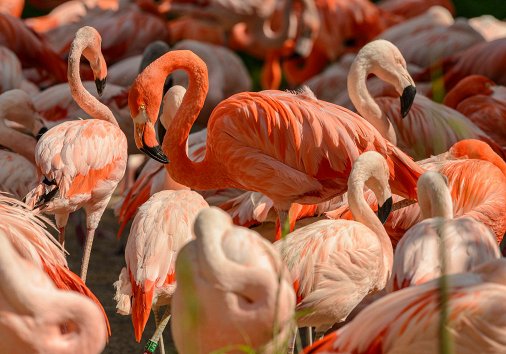Wildlife Photography Tips
Animals are the most beautiful and the most challenging models: they are unpredictable, they move fast, they don’t let a photographer approach and they don’t want to pose when you are ready to shoot.

How to take better wildlife photos
That’s why wildlife photo tips may be divided into two major categories: technical and artistic. First category includes all the hits concerning camera settings and gear. The second one is about the photographer’s behavior, composition peculiarities, etc.
Let’s have a closer look.
Aperture
Wide aperture lets more light in, so the shutter speed may be faster as we don’t have to wait till the sensor gets enough light. On the other hand, a small F-number provokes a shallow depth of field. That’s not a problem if you want to take a “portrait”, but the scenery may be lost.

Beginners had better set an “Aperture priority” mode and take as many pictures as they can, trying to catch the best combination.
Shutter speed
As we have already stated, animals are fast and unpredictable, especially if you shoot birds or predators. That’s why shutter speed must be as fast as possible. The tricky point — you should also adjust other settings, and if the lighting is poor, you may have to increase ISO.

ISO
ISO means a light-sensitivity of a camera sensor. There is no definition of an ideal ISO for wildlife photography, as it depends on the conditions greatly. The general rule is — stick to the mid numbers, and if you have to lower your aperture, increase ISO a bit, and vice versa.

-
Turn clips into storiesTransform raw footage into engaging videos.
Focus
You are not likely to have enough time to set focus manually, so select an auto one. Choosing between AF types, stick to continuous focus, as it allows you to “follow” the moving object, keeping it sharp — just what you need while shooting animals.
Lens
Wildlife photography lenses kit includes zoom and telephoto lenses, wide-angle lenses. The former for shooting animals from a distance without disturbing them, the latter — for gripping as much scenery and landscape as possible.
Tripod
The shooting equipment may be quite heavy and clumsy, and you may spend hours waiting for your “models” to turn up. That’s why a stable tripod for wildlife photography — or monopod — is a must have. If you don’t have any, consider mounting your cam on any flat surface you can find, as while shooting a moving object, a lens must be motionless.

Composition
Olde worlde Rule of Thirds does no harm: it makes pictures more dynamic and expressive. You can also crop out unnecessary parts of the images afterwards, so don’t worry! Try to add some background and context, and remember that every photo must tell a story, not just be cute and technically impeccable.

Patience
A wild-life photographer must be patient, as animals don’t usually answer our expectations and just live their lives. Make sure you are warm and safe, and you are well-prepared to stay relatively quiet and motionless for a long period of time. Wear a hat if it’s hot and have a thermos of hot tea if it isn’t.



